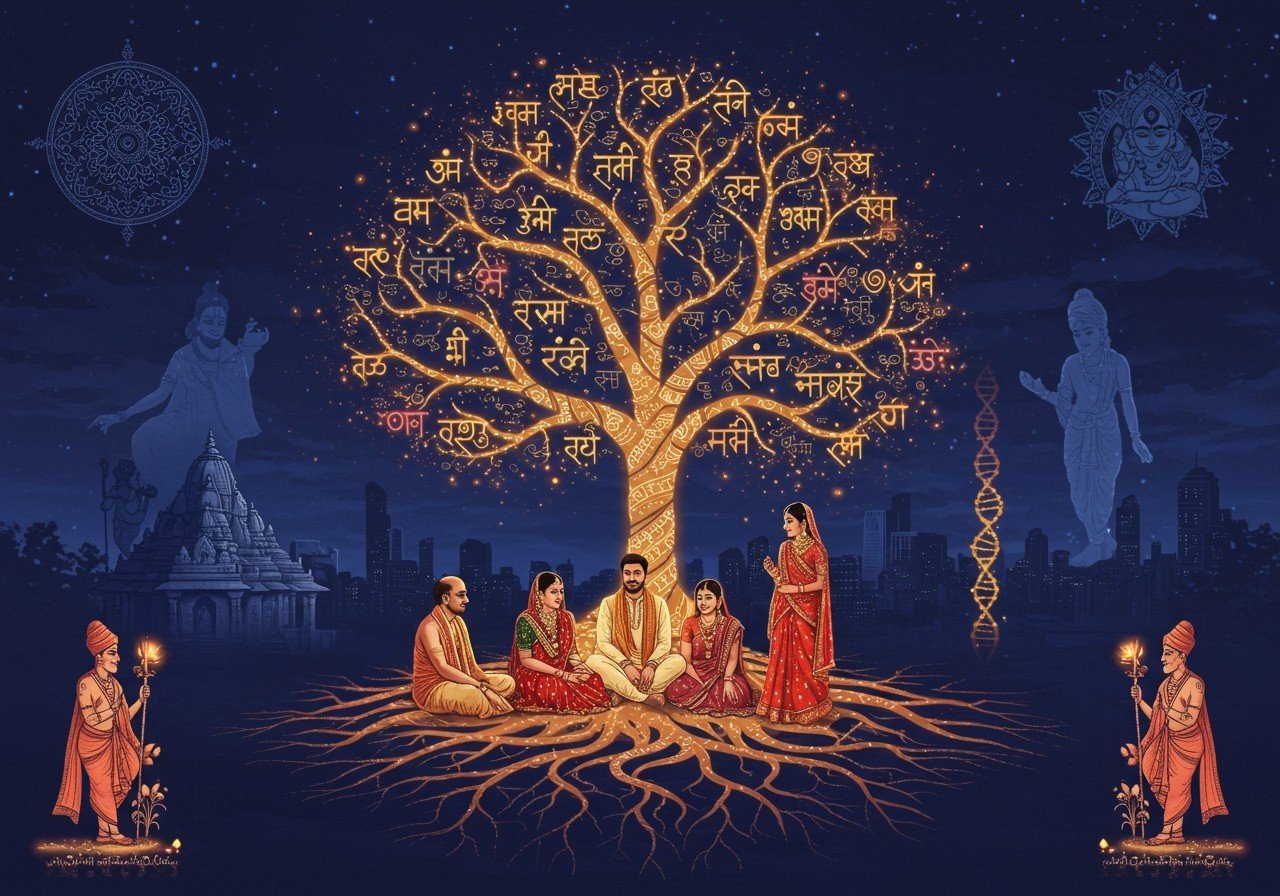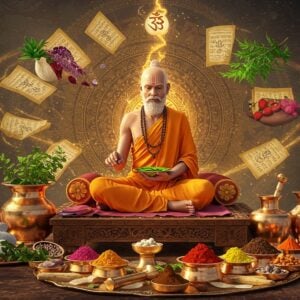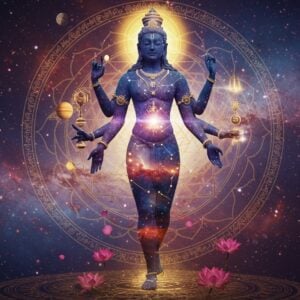
The Gotra system, a time-honored tradition in India, plays a significant role in connecting individuals to their ancestral roots. Passed down through generations, it acts as a lineage identifier, tracing back to ancient sages (Rishis). This blog delves into the core concepts of Gotra, exploring its historical significance and relevance in contemporary Indian society. It also addresses common misconceptions surrounding the system and highlights how Poojn.in supports individuals in preserving their Gotra traditions.
Gotra: A Journey Through Time
The Gotra system has its roots in the Vedic period, initially serving as a genealogical record. Primarily associated with the Brahminical tradition, it influenced marriage customs and rituals, ensuring lineage purity and preventing inbreeding. Over time, the system expanded beyond Brahmins, impacting social hierarchy and clan affiliations across various communities. Through centuries of change, the Gotra system has adapted to regional and dynastic shifts, reflecting India’s rich cultural diversity.
Core Concepts and Origins
Gotra, at its heart, represents a lineage or clan, tracing ancestry back to ancient sages. This system traditionally prohibits marriage within the same Gotra (exogamy) to prevent close blood relations and maintain genetic diversity.
- Lineage: Gotra acts as a thread connecting individuals to their ancestors, creating a sense of belonging and shared heritage.
- Exogamy: This practice safeguards genetic health and promotes diversity within the community.
- Vedic Roots: The Gotra system’s origins in the Vedic period add to its cultural significance.
- Cultural Identity: It serves as a powerful symbol of cultural identity, connecting individuals to their roots.
Traditional Significance and Modern Relevance
Traditionally, Gotra played a vital role in marriages, ensuring genetic diversity by prohibiting intra-Gotra unions. Gotras were also invoked during important life events and religious ceremonies, strengthening cultural continuity. In modern India, while its influence might be diminishing in cosmopolitan areas due to globalization, Gotra still holds significance for many as a link to their heritage and a source of community bonding. The rigid application of Gotra-based rules has softened, giving way to personal choice. You can explore more about ancient rituals on this blog: Dharma and Karma in Hinduism Explained.
Changes Over Time and Balancing Tradition with Modernity
Over time, the Gotra system has seen changes, particularly during periods like the Mughal era and British colonial rule, which introduced external influences and led to shifts in traditional practices. Today, the challenge lies in balancing tradition with modernity. Personal choice plays a greater role in decisions like marriage, and the focus is shifting towards inclusivity and understanding. Learn more about the global reach of Hindu traditions in this blog: Hinduism’s Global Reach: A Look at Its Diverse Traditions.
Addressing Misconceptions and Potential Drawbacks
It’s important to clarify some common misconceptions. Gotra is different from caste and surname. Gotra represents ancestral lineage, while caste is a social construct, and surnames are family names that can change. A woman’s Gotra doesn’t change after marriage. Some view strict Gotra rules as potential drawbacks, limiting personal freedom and potentially reinforcing social divisions. Further reading about strong women in the Ramayana: Ramayana Women: Their Strength and Modern Relevance.
How Poojn.in Supports Gotra Traditions
Poojn.in recognizes the importance of Gotra in Indian culture and offers various services and products to help individuals preserve their traditions:
- Expert Consultation: Connect with knowledgeable Pandits for Gotra verification and guidance on related rituals. Call us at 03369029784 or WhatsApp us at 9476142738.
- Ritual Items: Find authentic Samagri kits and traditional items for Gotra-specific ceremonies. Consider our Clay Doat for Saraswati Puja and Pure Kalwa Raksha Sutra.
- Digital Resources: Access verified Gotra charts, reference materials, and guides on specific practices. Delve deeper into scriptures with the Srimad Bhagavad Gita.
- Convenient Shopping: Experience hassle-free online shopping with home delivery across India. Browse our collection of Dor Mala and Tulsi Kanthi Mala.
- Documentation Support: Maintain digital records of your Gotra and access important certificates and traditional texts. More on the significance of the Ramayana Bridge: Ramayana Bridge: Significance, Myth, or Reality Explained?.
The Future of Gotra
The Gotra system stands at a crossroads, balancing its historical roots with the evolving dynamics of modern India. It’s essential to approach this tradition with understanding and respect, allowing for personal choice while honoring our rich cultural heritage. As we move forward, the focus should be on fostering inclusivity and adapting our traditions to the changing times.
FAQs on Gotra
What is the role of Gotra in modern India? Gotra continues to be a significant aspect of cultural identity for many Indians, connecting them to their ancestry. Its role in marriages and social customs is evolving, adapting to modern values and individual choices.
How does Gotra relate to genetics? Traditionally, Gotra exogamy aimed to prevent marriages within the same lineage, minimizing the risk of genetic disorders associated with close blood relations.
Is Gotra still relevant in urban settings? While the influence of Gotra might be less pronounced in urban areas compared to rural settings, it still holds cultural relevance for many individuals as a link to their roots.
How can I learn more about my Gotra? Resources like Poojn.in offer expert consultations, digital materials, and documentation support to help individuals understand and preserve their Gotra traditions.
Visit www.poojn.in or contact us to explore our Gotra-related services and products. Our team is dedicated to helping you uphold your traditions while embracing the convenience of modern living.


